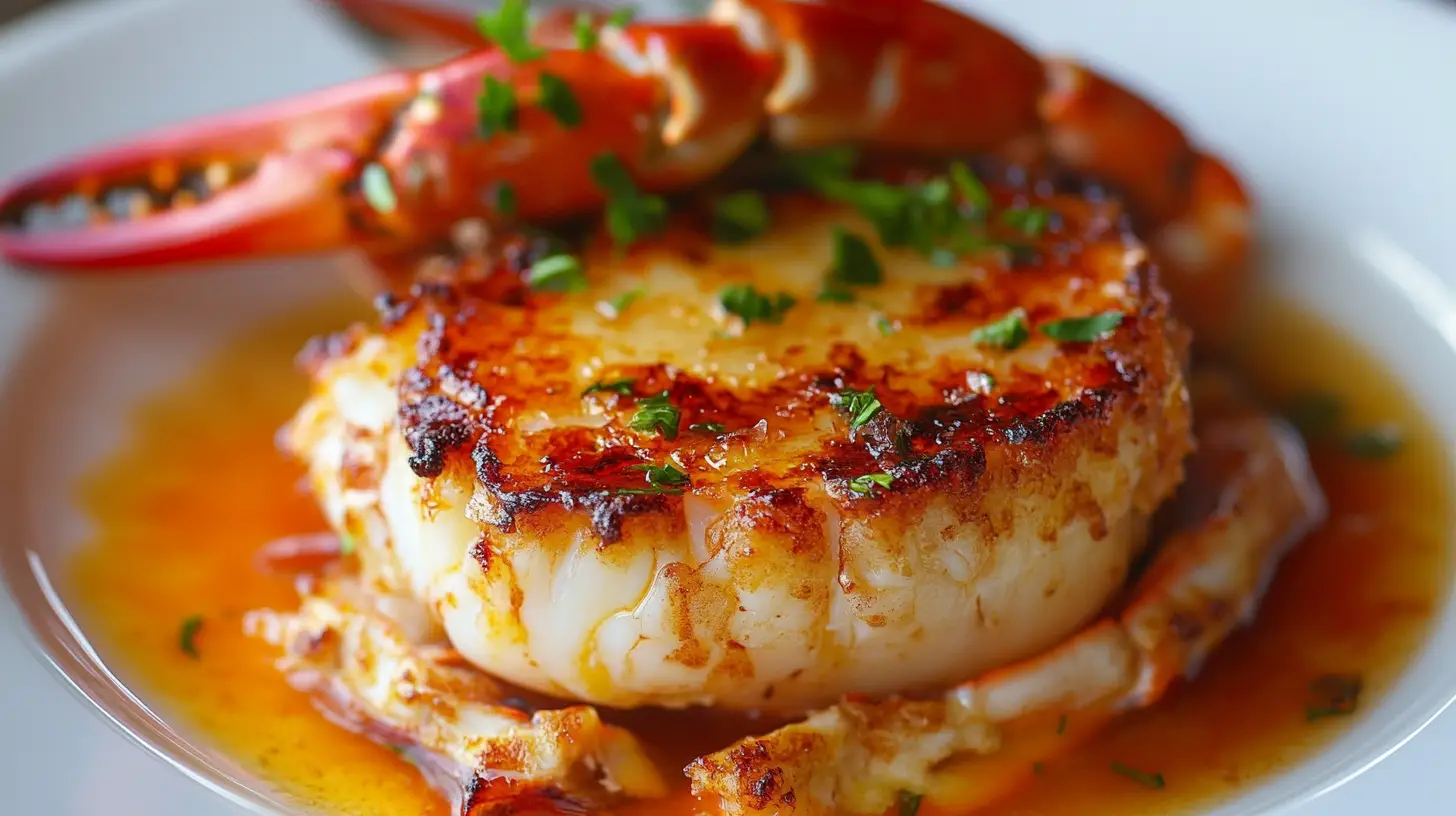Table of Contents
Introduction to Crab Brulee
Crab Brulee is a sophisticated twist on the classic crème brûlée, combining the creamy texture of custard with the savory essence of fresh crab meat. This unique dish is perfect for impressing guests at brunch or as an appetizer for a gourmet meal. In this comprehensive guide, we’ll dive into the step-by-step process, share tips for perfecting the dish, and provide pairing ideas to make your dining experience extraordinary.
Crab Brulee is a sophisticated twist on the classic crème brûlée, combining the creamy texture of custard with the savory essence of fresh crab meat. In addition, this unique dish is perfect for impressing guests at brunch or as an appetizer for a gourmet meal. Moreover, it offers a delightful balance of sweetness and saltiness that elevates any dining experience.
If you’re planning a full meal, consider pairing this dish with a flavorful Pumpkin Banana Loaf to complement the savory flavors of the custard.
What is Crab Brulee?
Crab Brulee is an inventive take on the traditional French dessert, transforming it into a savory masterpiece. Instead of vanilla and sugar dominating the custard base, this dish incorporates fresh Dungeness crab, cream, eggs, and spices like Old Bay seasoning. The result? A creamy, luxurious custard with a touch of seafood sweetness, topped with a caramelized sugar crust for a perfect balance of textures.
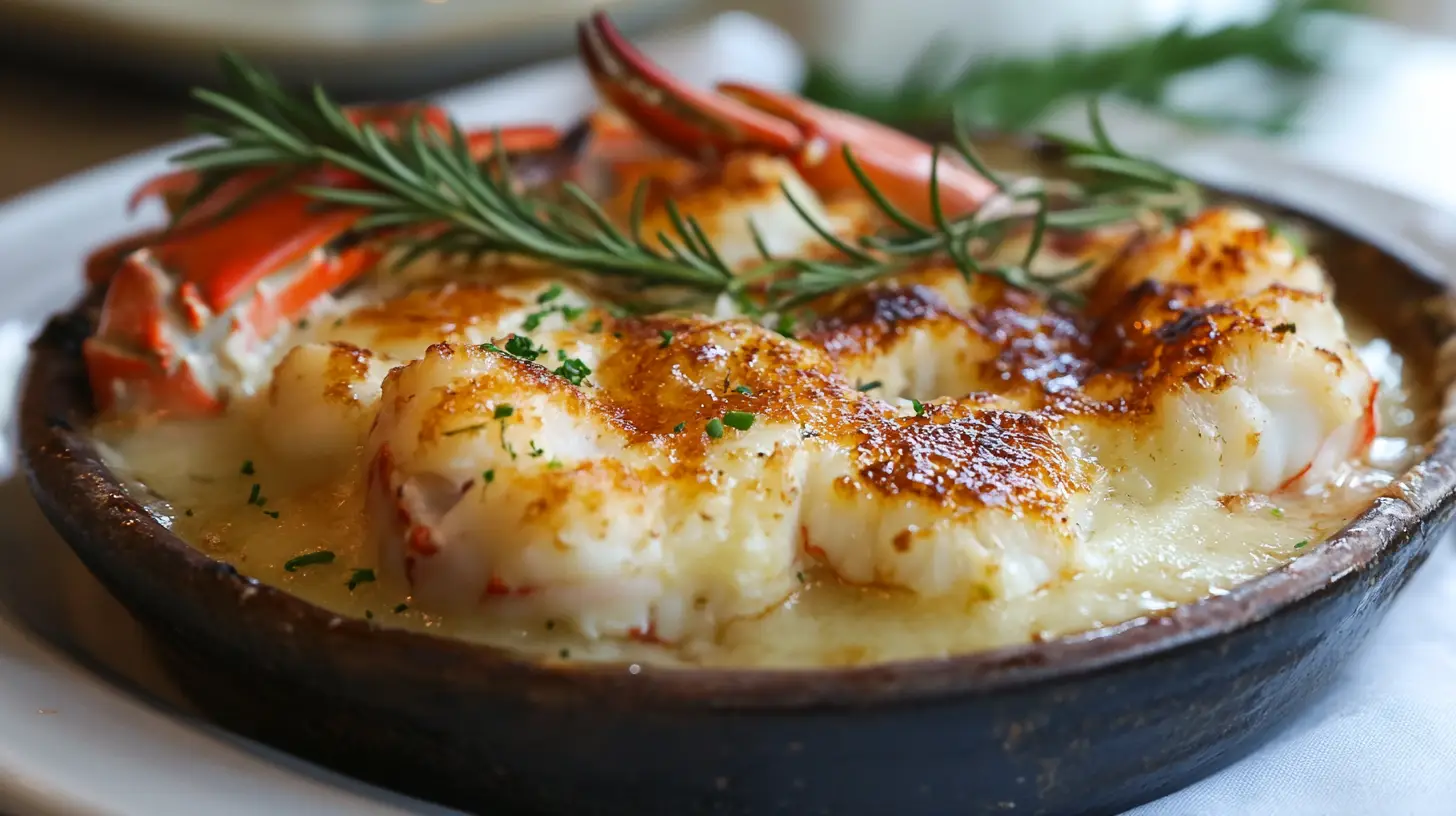
The appeal of Crab Brulee lies in its versatility. It can be served as a starter for an elegant dinner or a centerpiece for a luxurious brunch. If you’re planning a full meal, consider pairing this dish with a flavorful Pumpkin Banana Loaf for a comforting, sweet complement.
Ingredients for Crab Brulee
Achieving the perfect Crab Brulee starts with using fresh, high-quality ingredients. For example, fresh Dungeness crab meat provides the best flavor and texture. Additionally, the custard base combines heavy cream, eggs, and seasonings to achieve the desired richness. Therefore, paying attention to ingredient quality is crucial for success.
Primary Ingredients:
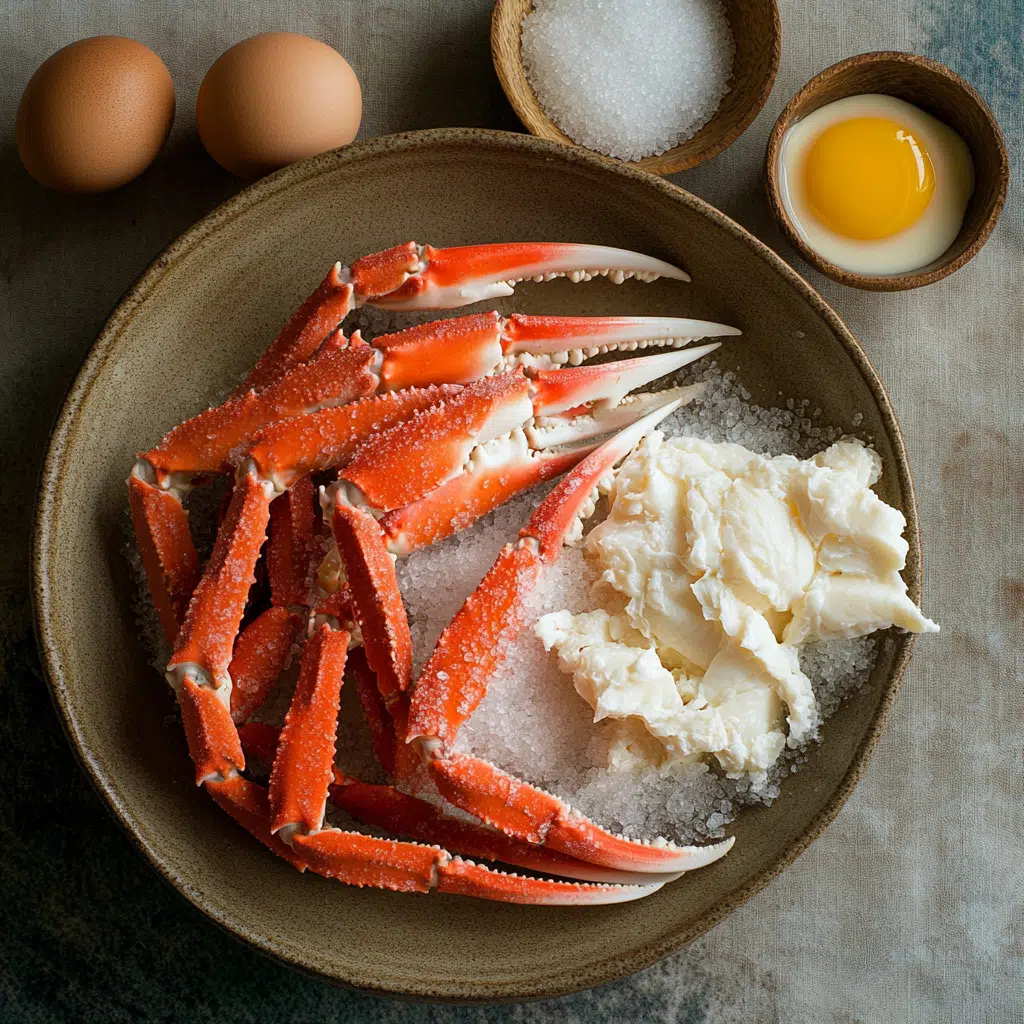
- Fresh Dungeness Crab Meat: 1½ cups (approximately one whole crab)
(For alternatives, you can use frozen or canned crab meat, but ensure it’s shell-free.) - Heavy Cream: 3 cups
- Egg Yolks: 6 large
- Sugar: ½ teaspoon for custard; 3½ teaspoons for the topping
- Salt: ½ teaspoon for custard; 1½ teaspoons for topping
- Old Bay Seasoning: ½ teaspoon
- White Pepper: ½ teaspoon
Optional Garnishes:
- Fresh herbs (e.g., chives or parsley)
- Lemon zest for a citrusy note
The quality of your crab meat can make or break this recipe.
Tools You’ll Need
Before starting, ensure you have the following kitchen tools:
- Ramekins (ceramic dishes)
- Baking tray
- Hand whisk or electric mixer
- Kitchen torch for caramelizing the sugar topping
Step-by-Step Instructions
1. Preparing the Crab Meat
Fresh crab is the heart of this dish, and proper preparation is crucial. First, bring a large pot of salted water to a boil. Then, add the whole crab and cook for about 20 minutes. Afterward, remove the crab, let it cool, and carefully extract the meat. As a result, you’ll have tender and flavorful crab meat ready for use.
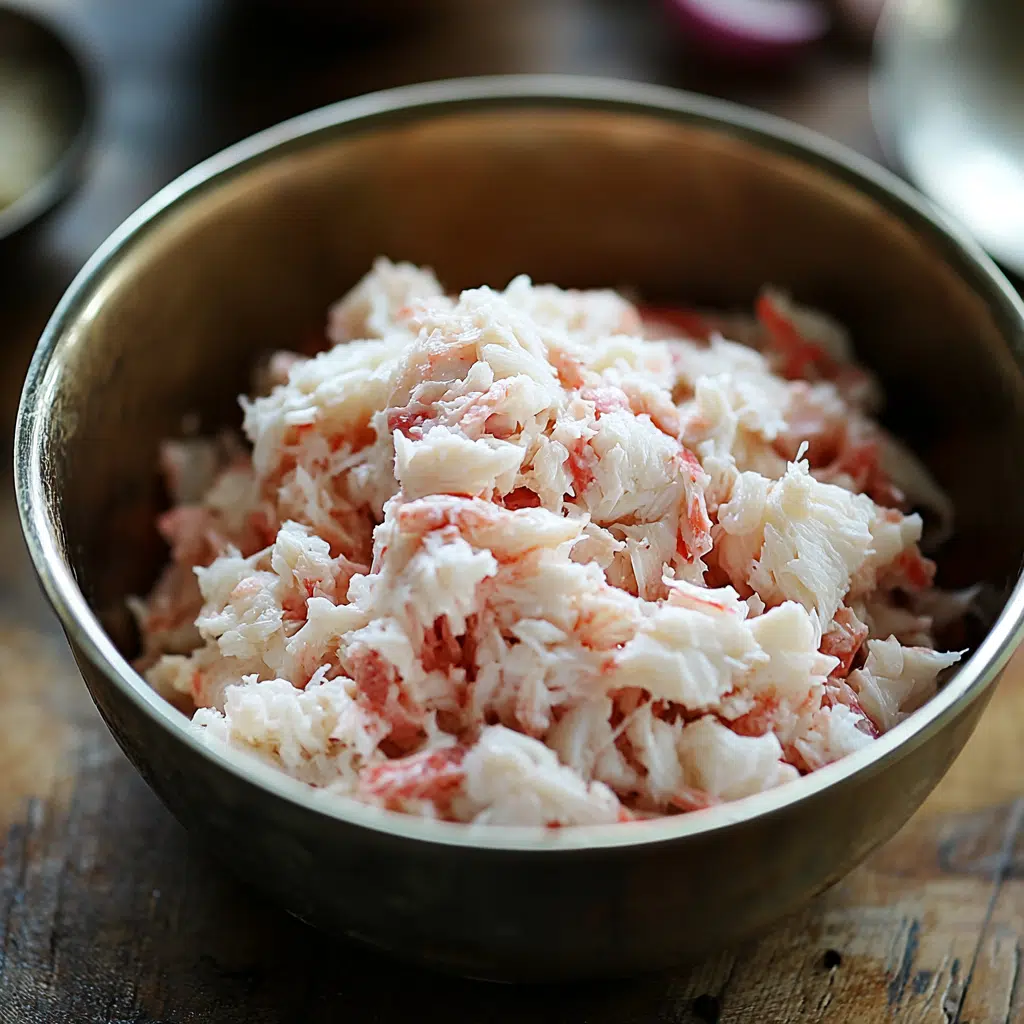
- Bring a large pot of water to a boil, seasoned with salt.
- Add the whole crab and cook for about 20 minutes.
- Once cooked, remove the crab, let it cool, and carefully extract the meat. Ensure there are no shell fragments.
- Set aside ¼ cup of crab meat for garnishing.
If fresh crab isn’t available, frozen or canned alternatives can be used. Just inspect them thoroughly for shells.
2. Crafting the Custard Mixtur
The custard base of Crab Brulee is what gives the dish its creamy texture and rich flavor. To begin, simmer heavy cream, salt, white pepper, and Old Bay seasoning on medium-low heat. Next, let the mixture cool until lukewarm. Meanwhile, whisk egg yolks and sugar in a separate bowl until creamy. Finally, combine the cream mixture with the eggs, whisking constantly.
- In a saucepan, combine heavy cream, salt, white pepper, and Old Bay seasoning. Simmer on medium-low heat until fully blended.
- Remove the mixture from heat and let it cool until lukewarm.
- In a separate bowl, whisk egg yolks and sugar until creamy.
- Slowly pour the cream mixture into the eggs, whisking constantly to prevent curdling.
3. Layering the Ramekins
This step ensures even distribution of crab and custard.
- Preheat your oven to 300°F (150°C).
- Place a generous amount of crab meat into the bottom of each ramekin.
- Fill the ramekins with the custard mixture, leaving a little room at the top.
4. Baking to Perfection
For a silky custard, bake the ramekins in a water bath.
- Place the ramekins on a baking tray.
- Fill the tray with water until it reaches halfway up the sides of the ramekins.
- Bake for 35–45 minutes, or until the custard is set with a slight jiggle in the center.
Remove the ramekins from the oven and let them cool to room temperature. Refrigerate for at least 2 hours before serving.
5. Caramelizing the Sugar Topping
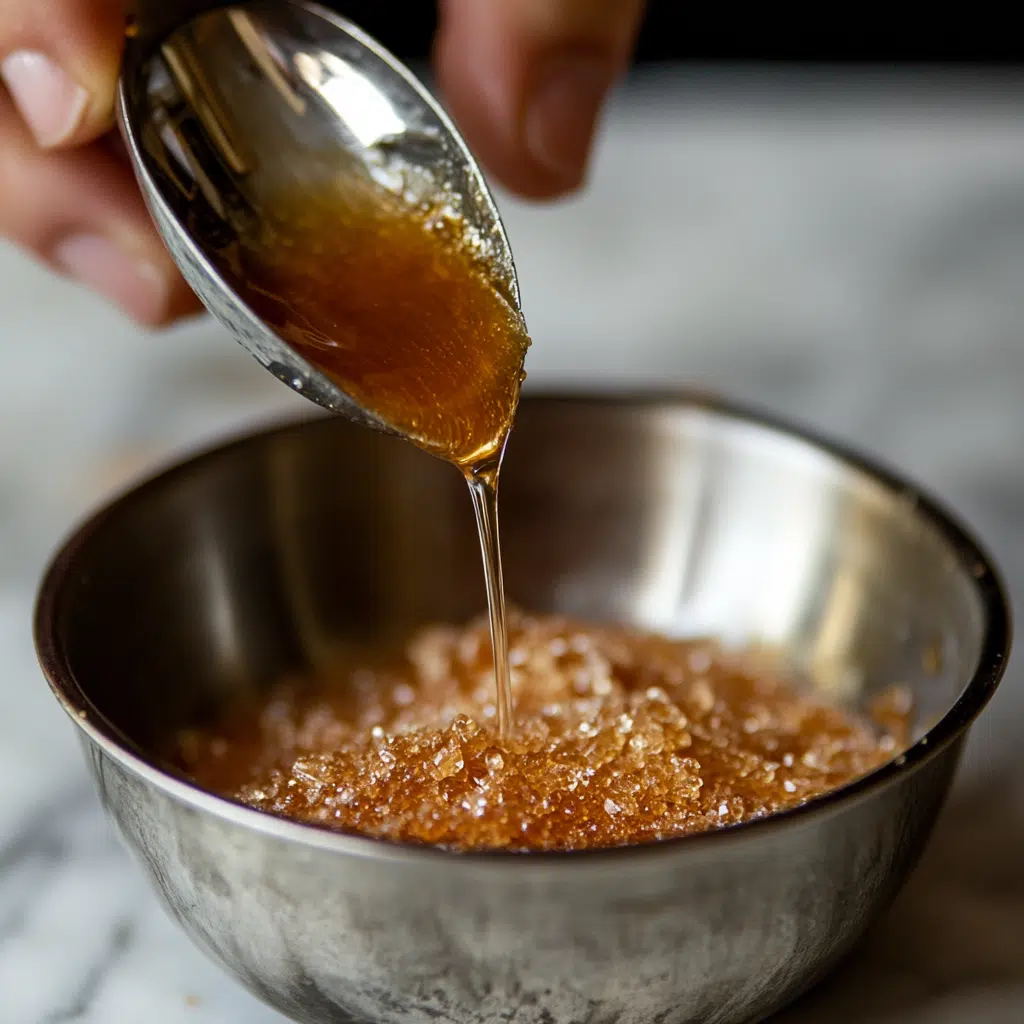
The caramelized sugar crust adds a delightful crunch to the creamy custard.
- Mix sugar and salt in a small bowl.
- Sprinkle a thin layer of the mixture over each ramekin.
- Use a kitchen torch to caramelize the sugar until it forms a golden crust.
Tips for Perfect Crab Brulee Recipe
To elevate your Crab Brulee, follow these expert tips:
First and foremost, use fresh ingredients to ensure the best flavor and texture.
In addition, balance the sweetness of the sugar crust with the savory notes of the custard.
Finally, be mindful of heat control when whisking the custard mixture to prevent curdling.
Nutritional Information of Crab Brulee Recipe
Calorie and Macronutrient Breakdown
Crème brûlée is a rich dessert that derives its calories primarily from cream, sugar, and egg yolks. On average, a single serving (about ½ cup) contains:
- Calories: 250–350 kcal
- Protein: 3–5 grams
- Fat: 18–25 grams
- Carbohydrates: 20–30 grams
The exact nutritional content will vary depending on the recipe and portion size. For example, using heavy cream contributes to the higher fat content, while the caramelized sugar topping adds to the carbohydrate count.
If you’re looking to balance indulgence with health, try these tips for a lighter version below!
Tips for Making a Lighter Version
- Swap Heavy Cream for Milk or Half-and-Half
Replace a portion of the heavy cream with milk or half-and-half to reduce the fat content. This adjustment will slightly alter the texture but still result in a creamy dessert. - Use Less Sugar
Reduce the amount of sugar in both the custard and the caramel topping. Alternatively, opt for natural sweeteners like stevia or monk fruit for a lower-calorie option. - Experiment with Egg Whites
Substitute one or two egg yolks with egg whites to cut down on cholesterol and calories. This change may make the custard slightly less rich but still enjoyable. - Control Portion Sizes
Serve smaller portions in smaller ramekins. Crème brûlée is a decadent dessert, so even a few bites can satisfy your sweet tooth. - Incorporate Low-Fat Ingredients
Some recipes call for low-fat cream cheese or yogurt as part of the custard base. While this creates a slightly different texture, it’s a great alternative for calorie-conscious eaters. - Avoid Over-Carmelizing the Sugar
Using less sugar for the topping and caramelizing it lightly will not only save calories but also reduce the risk of an overly sugary flavor.
For more insights into crème brûlée ingredients and preparation techniques, check out what crème brûlée is made of and the secrets of crème brûlée to master both traditional and lighter variations.
Common Mistakes and How to Avoid Them
Overcooking the Crab Mixture
One of the most common pitfalls when making a crab brûlée is overcooking the custard. Overcooking results in a grainy texture, detracting from the creamy, luxurious experience this dish is known for.
How to Avoid It:
- Use a Water Bath: Baking the ramekins in a water bath helps regulate the temperature and prevents the mixture from overheating.
- Check Doneness Early: The custard is ready when it jiggles slightly in the center but is set around the edges. Start checking a few minutes before the recipe’s suggested cooking time.
- Monitor Oven Temperature: Use an oven thermometer to ensure the heat is accurate and consistent.
For additional tips on perfecting custard-based recipes, see what makes a crème brûlée custard special.
Achieving Even Caramelization
A key hallmark of crab brûlée is its perfectly caramelized sugar topping. Uneven caramelization can lead to a burnt flavor or uneven texture that detracts from the dish’s appeal.
How to Avoid It:
- Spread Sugar Evenly: Ensure the sugar layer on top is thin and uniformly distributed. This prevents clumps from over-caramelizing.
- Use the Right Torch Technique: Keep the flame moving in small, circular motions to avoid burning one spot. If using a broiler, rotate the ramekins for even exposure.
- Choose Fine Sugar: Superfine sugar melts more evenly and quickly, making it ideal for caramelization.
For guidance on mastering caramelization techniques, explore the secrets of crème brûlée and learn how to bring your brûlée to perfection.
By addressing these common issues, you can create a flawless crab brûlée that balances creamy richness with a crisp, golden top every time.
Creative Serving Ideas
Crab Brulee pairs beautifully with a variety of accompaniments. For an indulgent brunch, serve it alongside a moist Pumpkin Banana Loaf for a sweet and savory contrast.
For dessert, consider pairing this dish with delicate colorful ingredients in cookie.
Variations of Crab Brûlée Recipe
Regional Twists on the Recipe
Crab brûlée, while a modern take on traditional brûlée, lends itself to delightful regional adaptations that highlight local ingredients and culinary influences. Here are some variations worth exploring:
- Cajun-Inspired Crab Brûlée: Infuse the custard with Cajun spices like paprika, cayenne, and garlic powder for a bold, Southern twist. Pair it with toasted bread or crackers for a satisfying appetizer.
- Asian Fusion Crab Brûlée: Add a touch of miso paste or sesame oil to the custard for umami depth, and garnish with chopped green onions or a drizzle of soy sauce.
- Mediterranean Crab Brûlée: Incorporate sun-dried tomatoes, feta cheese, or herbs like dill and parsley for a Mediterranean flair. This version pairs wonderfully with pita chips or cucumber slices.
For more ideas on elevating your dishes, check out unique seafood recipes like the boom boom shrimp for inspiration.
Creative Add-Ins and Toppings
Customizing crab brûlée with creative add-ins and toppings can transform this gourmet dish into something truly unique. Here are some suggestions:
- Add-Ins for Flavor Depth:
- Mix in finely chopped roasted red peppers for a hint of sweetness.
- Blend in a touch of truffle oil or mushroom puree for earthy sophistication.
- Stir in grated Gruyère or sharp cheddar cheese for added creaminess and complexity.
- Toppings for Extra Texture:
- Sprinkle panko breadcrumbs or crushed nuts (like almonds or pecans) on top before caramelizing for an added crunch.
- Finish with a light drizzle of honey or balsamic glaze for a sweet and tangy contrast.
- Garnish with microgreens or fresh herbs to enhance presentation and flavor.
Experimenting with variations ensures your crab brûlée stands out, whether as a crowd-pleasing appetizer or a refined dinner centerpiece. Explore other creative recipes on seafood and beyond for more culinary ideas.
FAQs about the crab brulee recipe
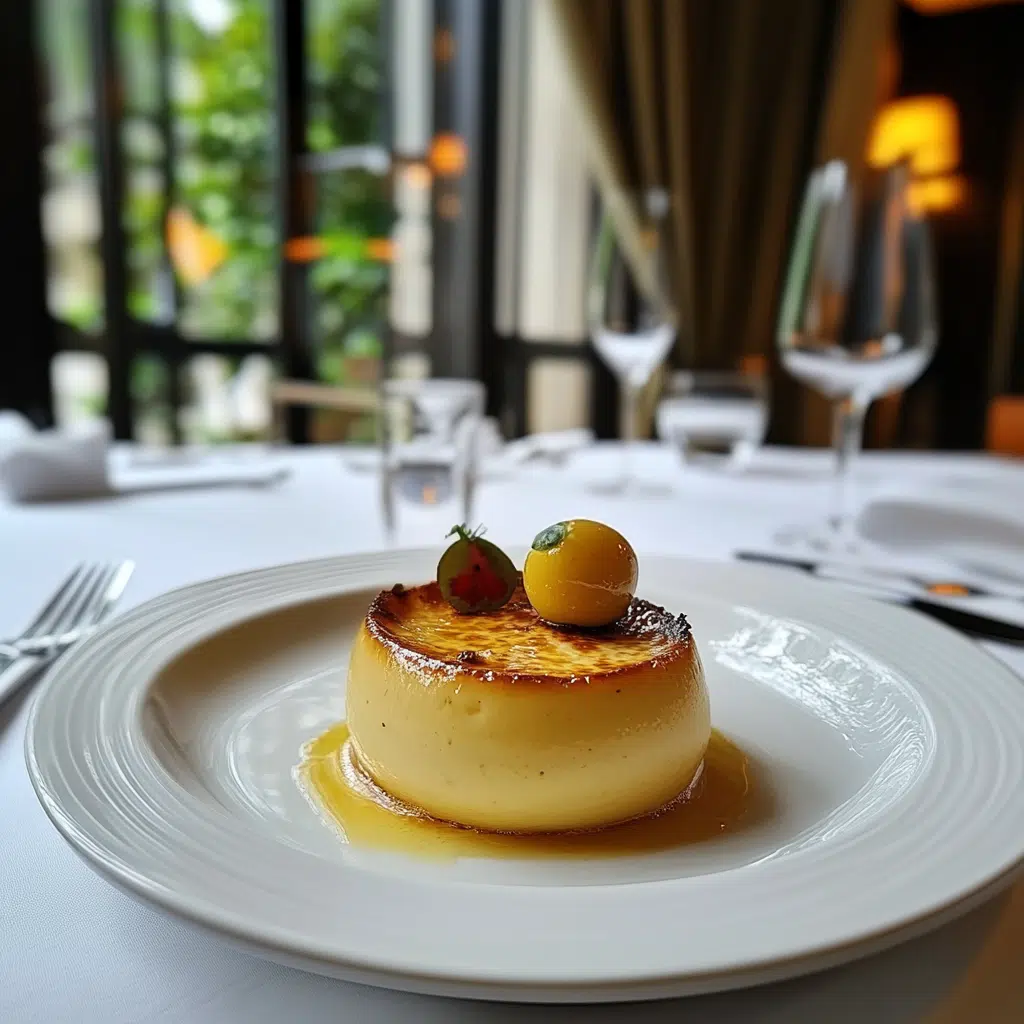
How should crème brûlée be served?
Crème brûlée is best served chilled with a freshly caramelized top. The contrast between the creamy custard and the warm, crispy sugar layer enhances the dessert’s elegance. For an added touch, garnish with fresh berries or mint leaves. Learn more about what crème brûlée tastes like to refine your presentation.
What can I use if I don’t have a crème brûlée torch?
If you don’t have a kitchen torch, you can caramelize the sugar under the broiler in your oven. Set your oven to the highest temperature and place the ramekins on the top rack, keeping a close eye to prevent burning. For more tips, check out the secrets of crème brûlée.
Storing Cooked Crème Brûlée
Cooked crème brûlée can be stored in the refrigerator for up to three days before caramelizing the sugar. Cover the ramekins tightly with plastic wrap to prevent them from absorbing other odors. Avoid caramelizing the top until just before serving to maintain the crisp texture.
What is the secret to crème brûlée?
The secret to perfect crème brûlée lies in gentle baking and precise caramelization. Baking the custard in a water bath ensures a smooth, creamy texture. When it comes to caramelizing the sugar, use a steady hand and avoid overheating. Dive deeper into the secrets of crème brûlée to master the technique.
What’s the difference between crème brûlée and custard?
Crème brûlée is a custard, but not all custards are crème brûlée. The key difference is the caramelized sugar topping, which sets crème brûlée apart. Additionally, crème brûlée is typically richer due to the use of heavy cream. Explore more about the difference between crème brûlée and custard for detailed insights.
What type of cream is best for crème brûlée?
Heavy cream is the best choice for crème brûlée as it provides the rich texture and creamy flavor that defines the dish. Using substitutes like milk or light cream may result in a thinner custard.
What is crème brûlée mostly made of?
Crème brûlée is primarily made of heavy cream, egg yolks, sugar, and vanilla. The simplicity of the ingredients highlights the importance of quality, especially for the cream and vanilla. Discover what crème brûlée is made of for a deeper understanding of this classic dessert.
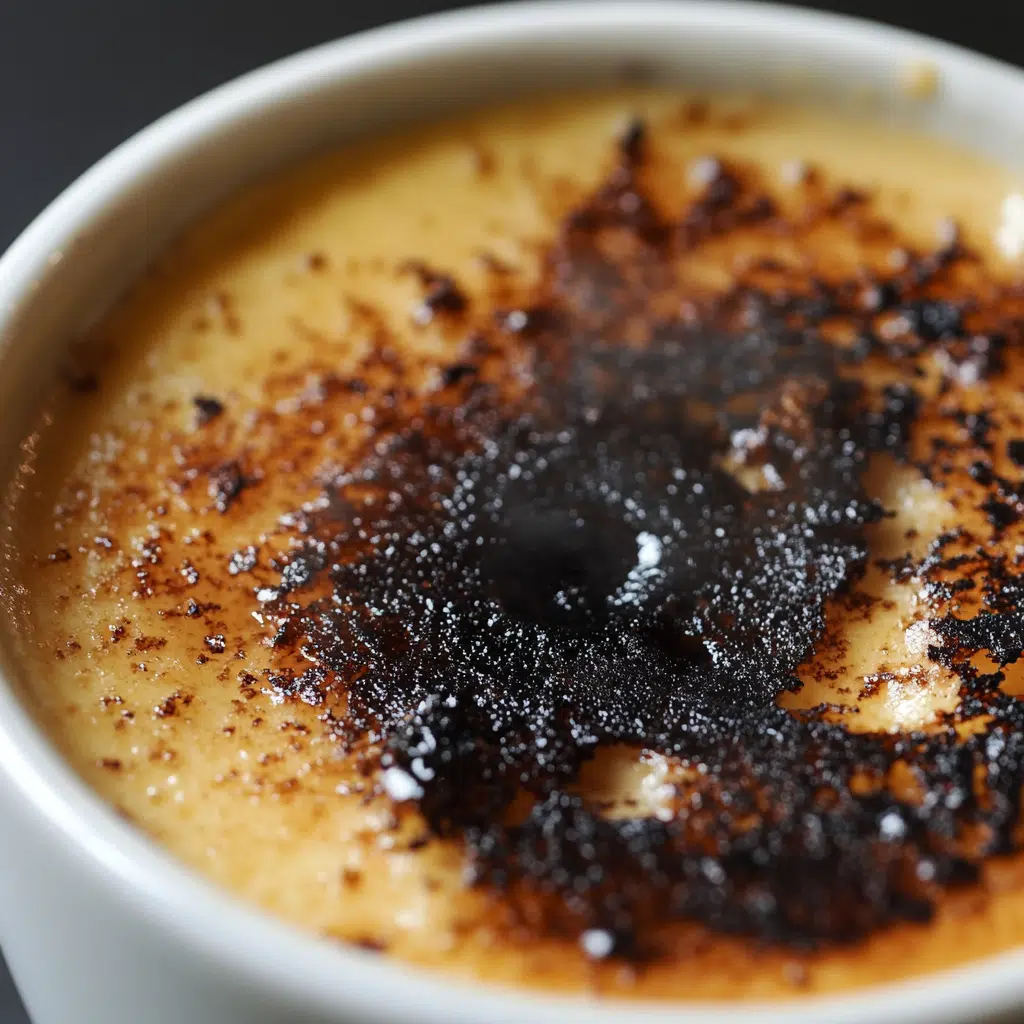
What is the black stuff in crème brûlée?
The black specks in crème brûlée usually come from vanilla bean paste or fresh vanilla pods used in the recipe. These specks are a sign of authentic vanilla flavor, adding depth to the custard.
Can you use milk instead of heavy cream in crème brûlée?
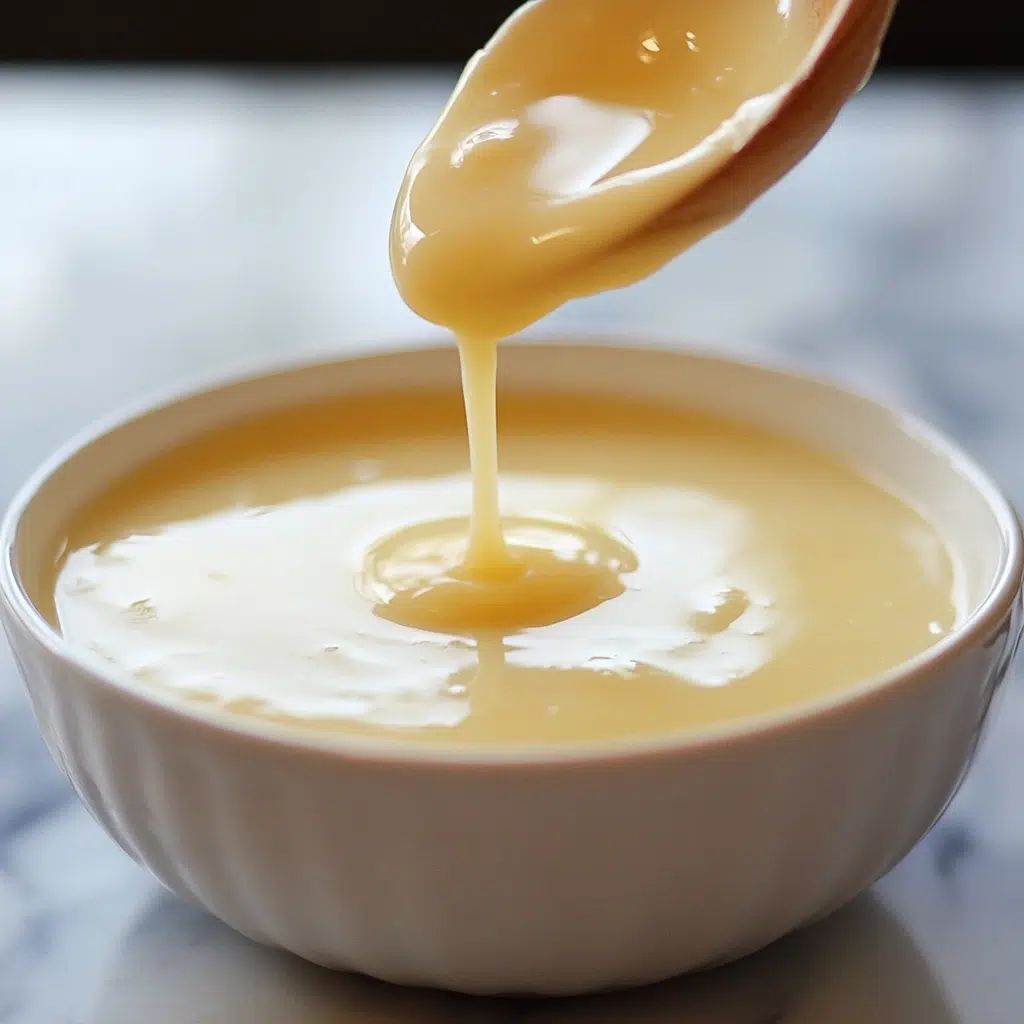
While milk can be used as a substitute, it will result in a lighter custard and may lack the creamy richness that crème brûlée is known for. For the best results, stick to heavy cream or experiment with a combination of cream and milk.
With these FAQs, you’ll be ready to create, serve, and store the perfect crème brûlée. Explore more related recipes and tips on creme brulee recipes to refine your culinary skills!
Conclusion
Crab Brulee is more than just a recipe—it’s an experience that combines the elegance of French cuisine with the fresh, savory taste of seafood. Whether served as a brunch centerpiece or a dinner appetizer, this dish is sure to impress.
Complete your meal by exploring complementary dishes like Pumpkin Banana Loaf for brunch or crumbl cookie recipe as a dessert option.
Dive into this gourmet journey and savor every bite of your perfectly crafted Crab Brulee!

